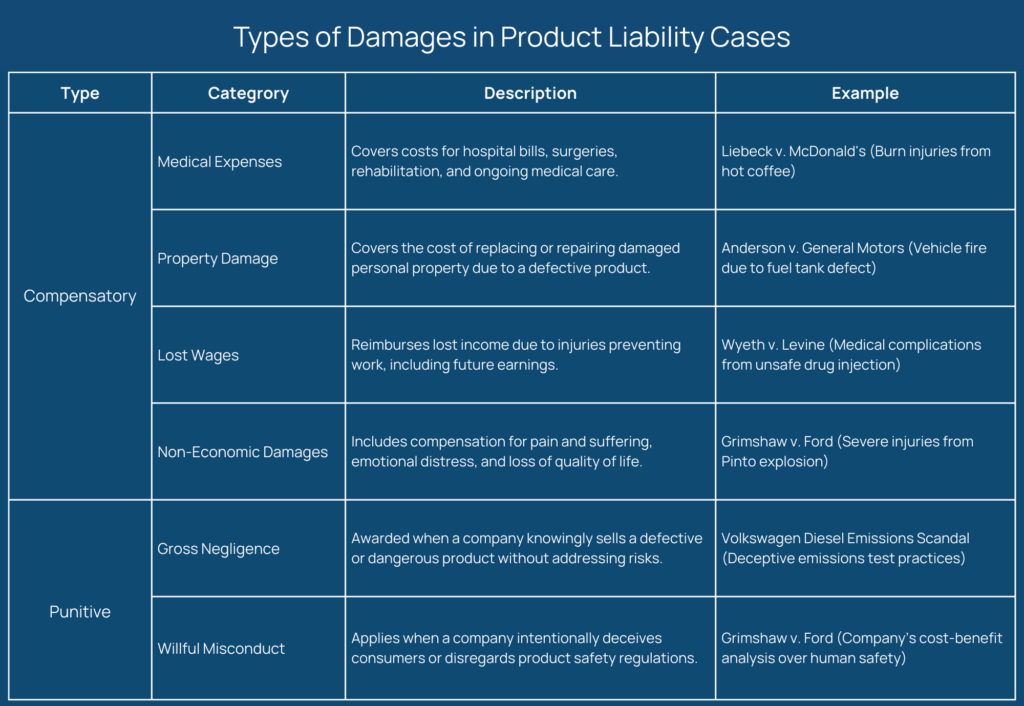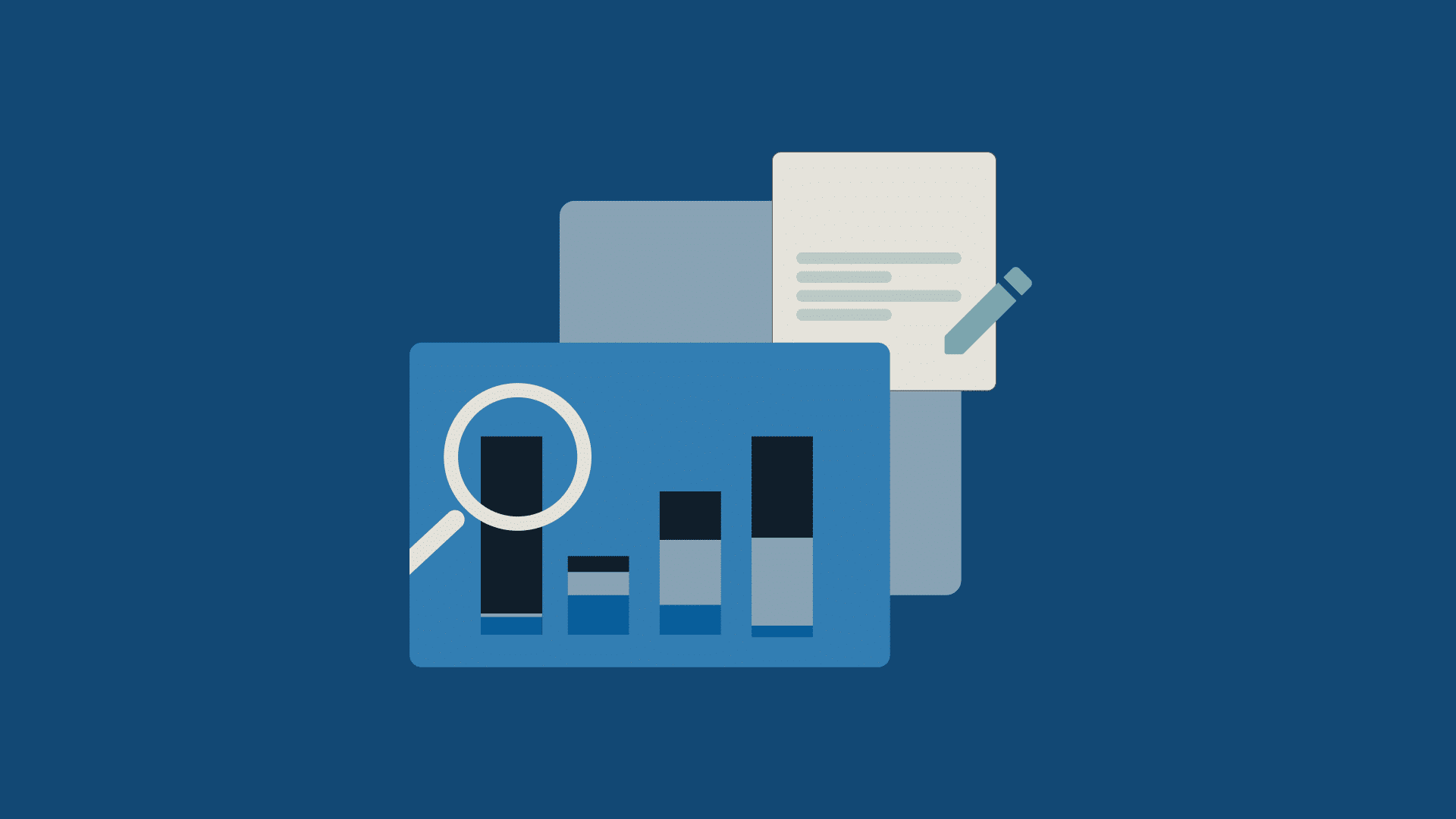When you buy a product, you expect it to be safe. However, history has shown that some consumer products have been released with dangerous flaws, leading to severe injury, wrongful death, and even industry-wide scandals.
Product liability law holds manufacturers accountable when they fail to ensure their products are safe for public use. From defective designs to inadequate warnings, the following landmark product liability cases changed how companies approach product liability litigation. These cases set legal precedents for liability and damages, shaping the rights of consumers in the United States.
Here’s a look at five major product liability cases (and briefs on each) that reshaped corporate responsibility and influenced product safety standards in the United States.
Contents
1. Grimshaw v. Ford Motor Co. (1981)
The Ford Pinto case is one of the most infamous product liability lawsuits in history. It revealed how corporate decision-making prioritized profits over human lives. This case exposed General Motors’ competitor, Ford, for knowingly releasing a defective product that led to deadly consequences.
Case brief
Facts:
- The Ford Pinto was designed with a dangerous product flaw—its gas tank was placed in a way that made it prone to exploding upon rear-end collisions.
- Internal Ford documents showed the company calculated that paying off potential injury lawsuits would be cheaper than fixing the design defect.
- Plaintiff Richard Grimshaw suffered serious injuries, and another passenger was killed in an explosion following a minor collision.
Issue:
- Was Ford liable for selling an unsafe product under product liability law?
Rule:
- Strict liability applies to manufacturers who knowingly release a defective product that causes harm.
Application:
- The jury found Ford guilty of gross negligence and failure to warn consumers.
- Ford was ordered to pay punitive damages to deter future corporate misconduct.
Conclusion:
This case remains a major example of product liability litigation, leading to stricter automotive safety regulations.
2. Liebeck v. McDonald’s (1994)
This case is often misunderstood as a frivolous lawsuit, but it had a profound impact on corporate responsibility. It demonstrated the dangers of inadequate warnings on consumer products and led to reforms in how companies label potential hazards.
Case brief
Facts:
- Plaintiff Stella Liebeck ordered coffee at McDonald’s, but when it spilled on her lap, she suffered third-degree burns requiring skin grafts.
- McDonald’s was found to serve coffee at dangerously high temperatures (180-190°F) with no inadequate warnings on the cup.
- Liebeck sued for medical expenses, emotional distress, and non-economic damages.
Issue:
- Was McDonald’s liable under product liability law for failing to warn customers about the extreme temperature of its coffee?
Rule:
- A product liability claim applies when a company fails to warn about potential dangers associated with normal product use.
Application:
- The jury found McDonald’s responsible for product liability litigation, awarding compensatory damages and punitive damages to Liebeck.
- The case settled in settlement negotiations, leading to widespread changes in labeling for hot beverages.
Conclusion:
This product liability suit reshaped consumer protection, and federal court views on inadequate warnings.
3. Anderson v. General Motors (1999)
Automakers have faced multiple product liability claims but the Anderson case was particularly shocking. It revealed how a defective product from General Motors led to catastrophic injuries – and why companies need to adhere to safety standards.
Case brief
Facts:
- The plaintiff, a family involved in an accident, sued General Motors after their vehicle’s fuel system failed and caused a fire.
- The defective design made the fuel tank highly vulnerable to ignition. The injury and damages were severe, including loss of life.
Issue:
- Did General Motors fail to prevent an unsafe product from reaching the market?
Rule:
- Under product liability law, manufacturers must ensure products are free from design defects that could cause serious injury.
Application:
- The jury ruled in favor of the plaintiff, awarding compensatory damages and punitive damages to hold GM accountable.
Conclusion:
This case reinforced safety standards for vehicles and increased product liability attorneys’ ability to challenge automakers.

4. Wyeth v. Levine (2009)
Medical devices and pharmaceuticals carry immense risk and this case set an important precedent regarding inadequate warnings. It determined whether federal court preemption could override state product liability lawsuits.
Case brief
Facts:
- Plaintiff Diana Levine lost her arm due to gangrene after receiving an IV-push injection of Phenergan. Wyeth, the drug manufacturer, did not provide clear product liability claim warnings about the risks associated with this method of administration.
Issue:
- Should federal court rules preempt state product liability litigation?
Rule:
- Drug manufacturers must provide adequate warnings and cannot avoid product liability lawsuits by citing federal court approval.
Application:
- The Supreme Court ruled in favor of Levine, stating that product liability attorneys can hold pharmaceutical companies accountable.
Conclusion:
This ruling strengthened consumer protection for medical devices and prescription drugs.
5. Volkswagen Diesel Emissions Scandal (2015)
The Volkswagen emissions scandal exposed how a major automaker deceived regulators and consumers. This case highlighted product liability litigation involving fraudulent claims rather than dangerous products.
Case brief
Facts:
- Volkswagen installed software to cheat emissions tests, misleading consumers and violating federal court regulations.
- Over 11 million vehicles were affected, emitting pollutants far above legal limits.
- Consumers suffered economic losses due to vehicle devaluation and false environmental claims.
Issue:
- Did Volkswagen’s deception constitute a product liability claim?
Rule:
- Product liability law applies when a company intentionally misleads consumers about product performance.
- VW faced:
- $20+ billion in settlements (U.S.)
- Criminal charges (pleaded guilty)
- Class action lawsuits worldwide
- Loss of brand trust and market value
Application:
- Volkswagen was forced to pay billions in compensatory damages and class action settlements.
Conclusion:
While not a traditional injury-based product liability case, VW’s actions triggered a massive legal shift regarding consumer fraud, environmental law, and misrepresentation statutes. This case reshaped corporate ethics and supply chain transparency.
The impact of landmark product liability cases
These landmark product liability cases demonstrate the importance of product liability litigation in protecting consumers. Whether through design defects, inadequate warnings, or corporate fraud, companies must be held accountable when their consumer products cause harm.
For product liability attorneys, managing complex litigation—especially class actions, multidistrict litigation, and settlement negotiations—requires powerful tools to track cases, organize evidence, and streamline legal workflows. That’s where CloudLex comes in.
CloudLex provides case management software built for personal injury law firms, helping attorneys handle product liability claims efficiently. From document management to litigation tracking, CloudLex empowers legal teams to stay organized and maximize case outcomes.
If you or someone you know has suffered from a faulty product, consult product liability attorneys with extensive experience—and if you’re an attorney handling these cases, explore how CloudLex can transform your legal practice.
Learn more about CloudLex’s product liability case management solutions.
DISCLOSURE: This publication contains general information only and Cloudlex, Inc. (“CloudLex”) is not rendering accounting, business, financial, investment, legal, tax, or other professional advice or services. This publication is not a substitute for such professional advice or services. You not use or rely on this publication as a basis for any decision or action that may affect your business or interests. Before making any decision or taking any action that may affect your business or interests, you should consult a qualified professional advisor. Cloudlex does not assume any liability for reliance on the information provided herein. By accessing this publication, you agree that the Cloudlex Terms of Service apply.

